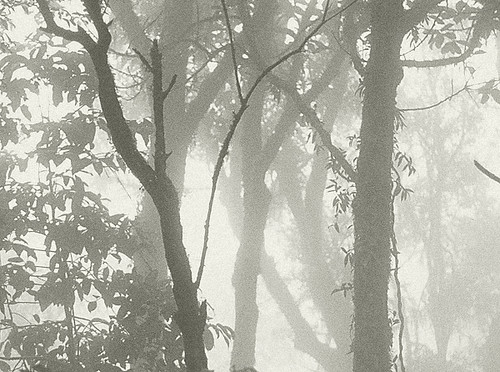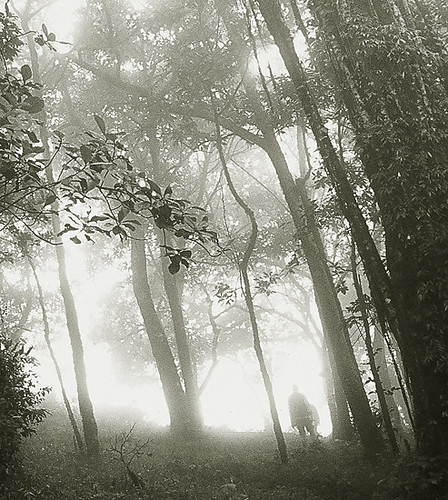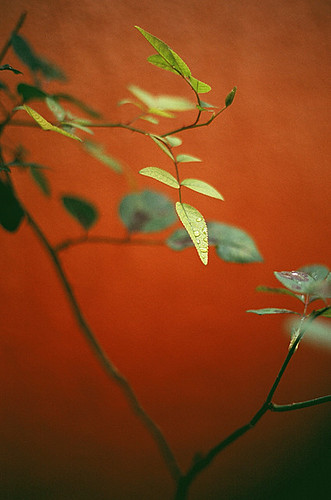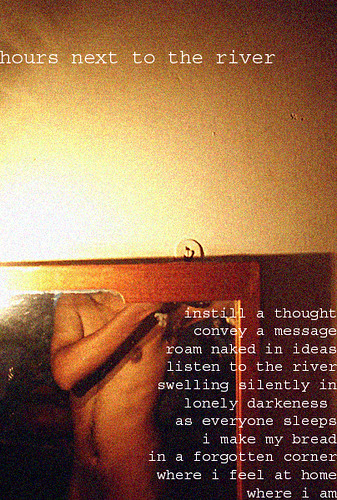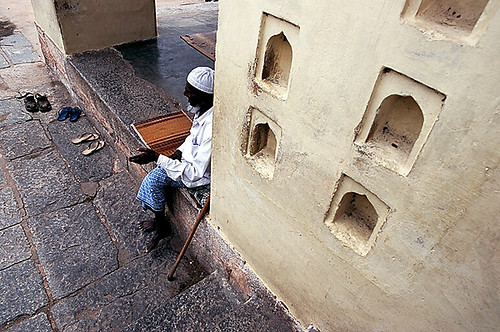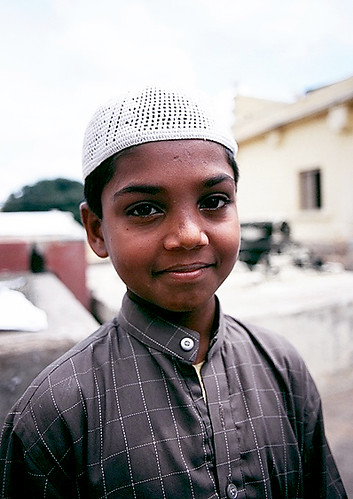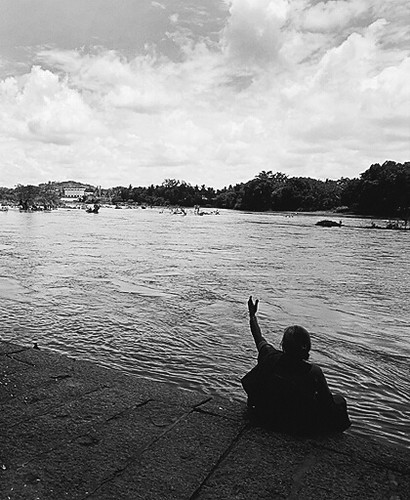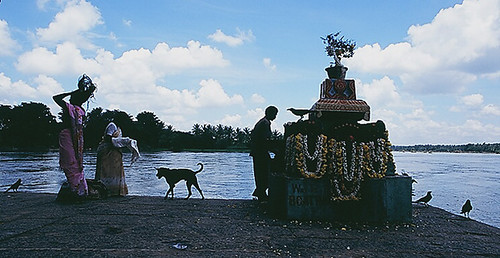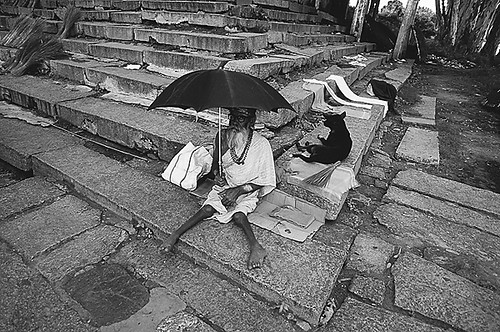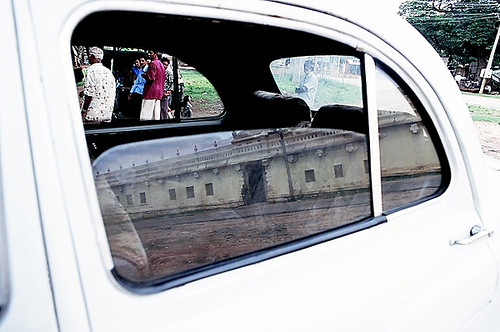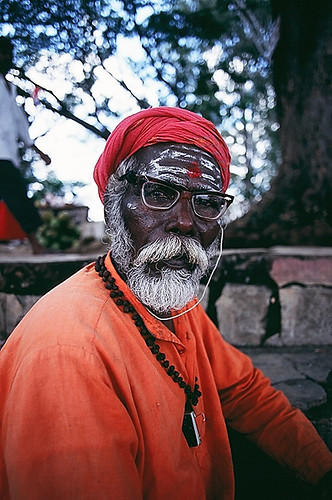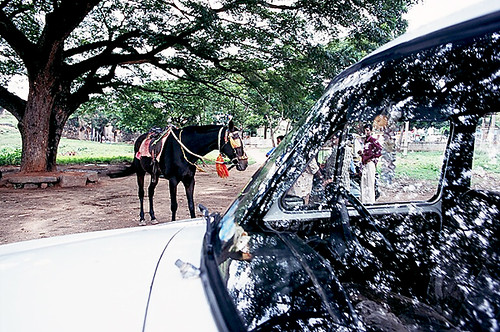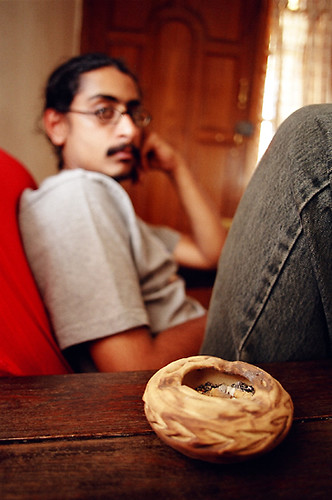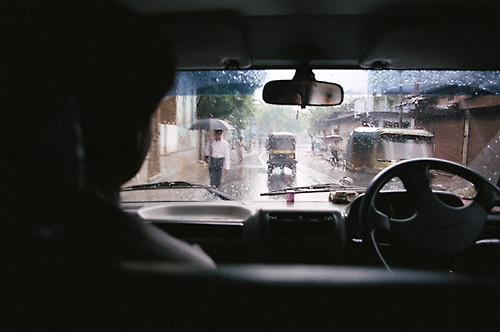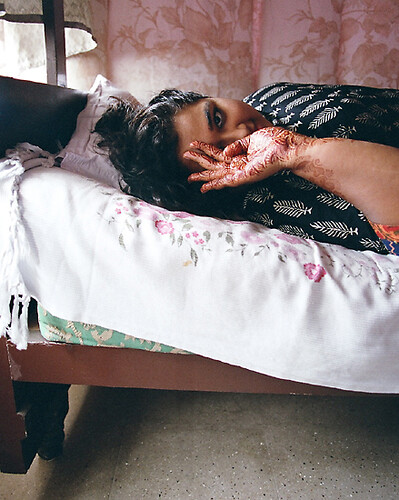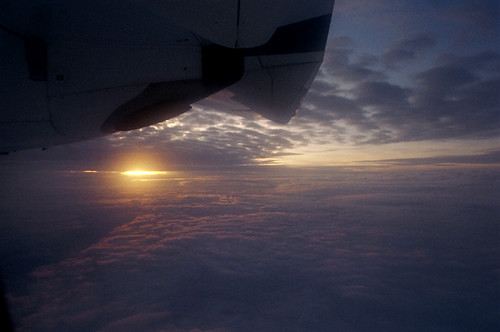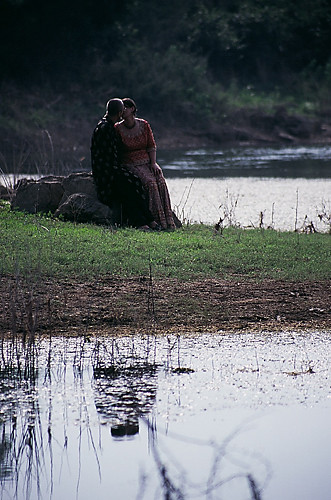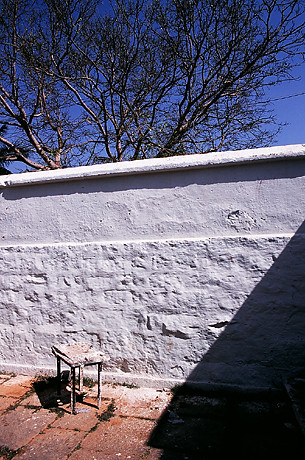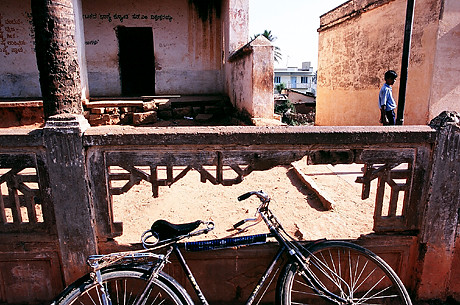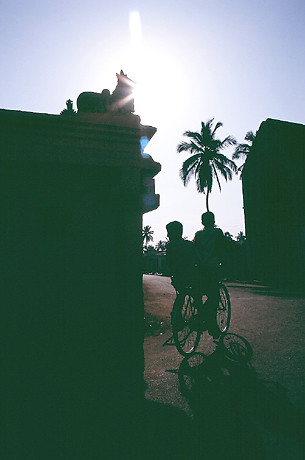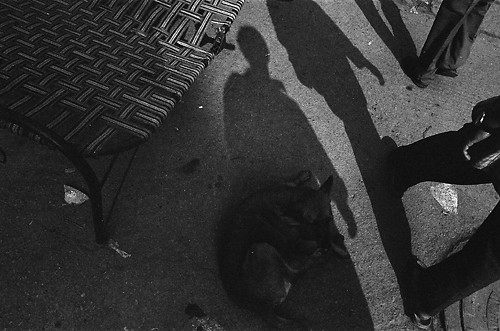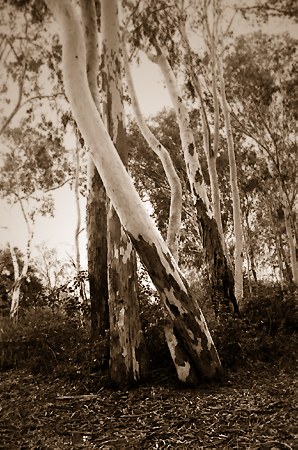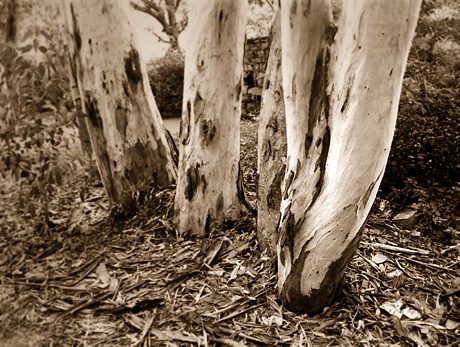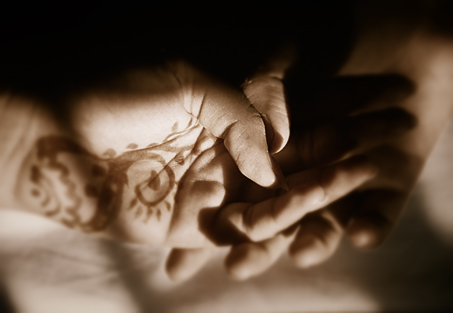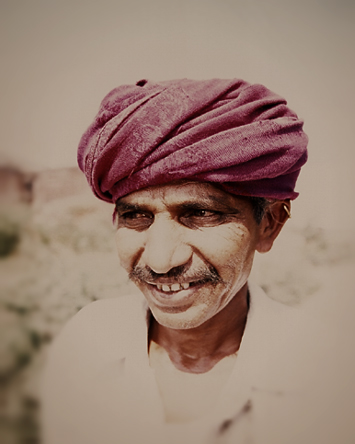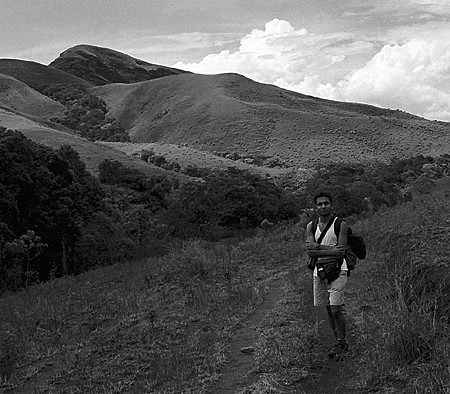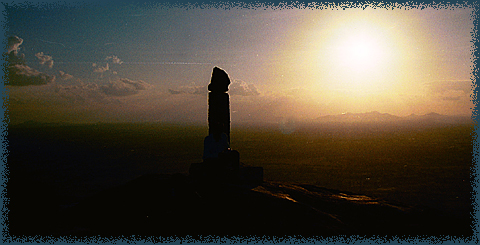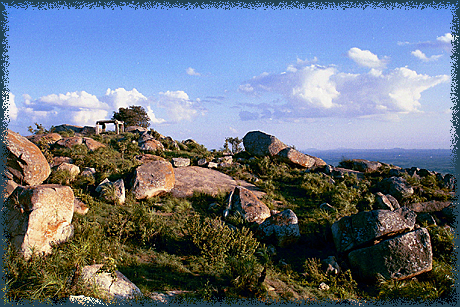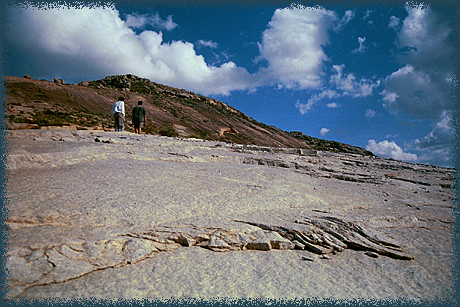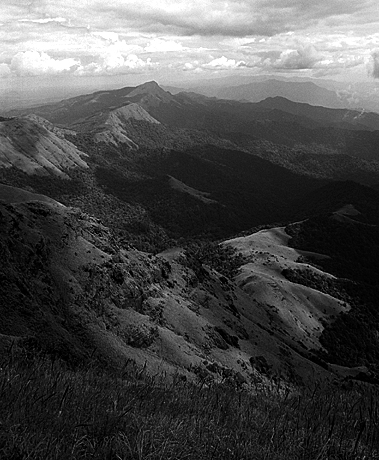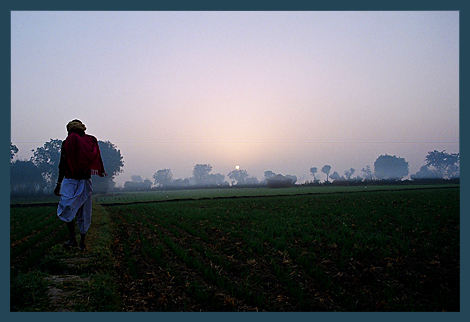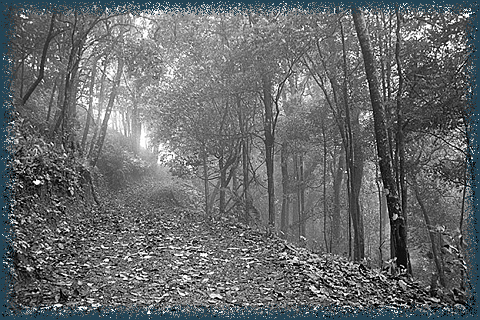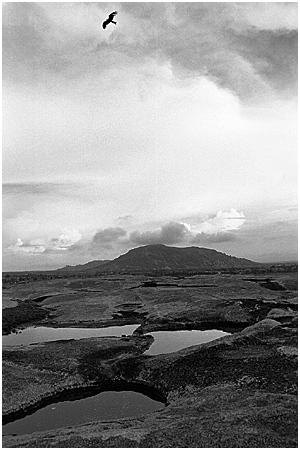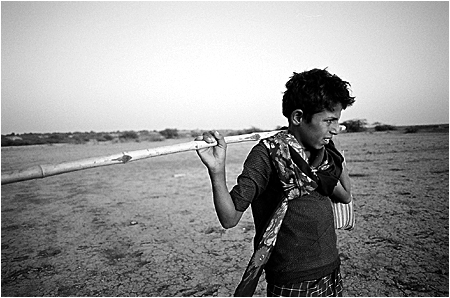brahmagiris. dec 2005
Thursday, December 22, 2005
Wednesday, November 30, 2005
Wednesday, September 28, 2005
Monday, September 26, 2005
Friday, September 02, 2005
Monday, June 20, 2005
paul and katia
i did an interesting assignment for a beautiful belgian couple recently. they have been in india for quite sometime and are absolutely in love with this land! they wanted me to shoot countryside, not necessarily beautiful landscapes, around bangalore and, they didn't mind if they occasionally became a part of the picture!
Thursday, June 16, 2005
temple wall
'harsh' light, chose noon for the picture. not hinting at 'leading lines', nor 'rule of thirds'.
all three photographs previously unposted.
school on a saturday
full frame. not cropped. subject, however, cropped during composition. human element not added for 'scale', added for composition.
little boys around the temple
shot in 'harsh light'. no details. deliberate underexposure. deliberate composition.
Open Your Eyes...
1. Nobody seems to encourage creativity. everything is based on 'rules' in photography. what are the 'rules', sir?
2. Photography is reduced to mere 'attractive light'. not so. please.
3. Techniques, techniques. and more techniques. enough! here one, 'i think it would have been better if you have underexposed by a stop..' ha!
4. Everybody is licking each other's a***s. dead end.
i am really sorry to say.... i have never ever found the enthusiasm to comment on a single picture for the past few weeks. and reading other's comments brings a smirk that need not be translated. some comments are absolutely insane, bizzare and saying exaggerated would do injustice. i have plenty of examples and i better keep my mouth shut. and just watch.
Friday, May 06, 2005
My new blog!
http://doconcall.blogspot.com/
Saturday, April 30, 2005
sunday morning
some pictures that i shot at one of Bangalore's busiest and oldest localities, the Majestic, on a sunday morning.
Tuesday, March 29, 2005
Tuesday, March 22, 2005
Sunday, March 20, 2005
Wednesday, March 16, 2005
Friday, February 11, 2005
Last Word
The present state of creative photography in the country is very confused and leaves a lot to be desired.
Inevitably, India becomes the recipient of outdated technologies, fashions, and ideas from the West. This gets reflected in photography too. Photographers are expected to entertain through their work. But we are not visual entertainers.
Of course, there are enough of us who love to dabble in the medium and produce pretty pictures. Unfortunately, it is often this kind of photographer who gets picked up and lionised by editors and commentators, who make it a point to back the sensational rather than the solid.
If you say Shakespeare or Milton or Tagore is not entertaining enough, I would, quite rightly, dismiss you out of hand. The same principle applies to photographers. After all, ours is an art that is sensitive to nuance. We want to go beyond the mere physicality of our subject and delve in its inner truths. It is only in this way can the inner aura of people and objects be captured and communicated to others.
This requires a vision that goes beyond the superficial in both the people who photograph and the people who see.
Today is truly the age of fast food. We have fast food editors, fast food designers, fast food layout artists, fast food photographers. For them packaging is everything, the very essence of things.
Earlier those who influenced public opinion, whether they were editors or film makers or painters, tried to go about their work with a certain responsibility and a commitment to what they believed in.
Today, none of this is necessary. Everything works on market surveys. It is what sells that counts. Nothing else. And this,I believe, spells the death of true creativity.
Copyright © 1997 Indian Express Newspapers (Bombay) Ltd.
Alan Harvey is God.
David Alan Harvey is undoubtedly at the pinnacle of fine documentary photography. A sudden urge sent me digging through my old National Geographics to look for more of his stories. I was trying to read him through his powerful pictures. I spent a lot of time to understand, absorb and see beyond his pictures he has clicked for an assortment of assignments. His pictures represent photography at its sensitive best; his natural style of capturing the beauty of a place is quite unmatched. It is easy to understand why he is the best.
Harvey easily diverges from his contemporaries like Salgado and fellow photographers at Magnum, even McCurry. Salgado’s works would seem more of fine art, very passionate and moving (I am talking with mainly ‘Sahel’ in mind); Steve McCurry’s would seem to represent the perfect ‘on-assignment’ work- more apt, very client conscious, classy and ‘easily’ appreciated pictures I would say. But Harvey pictures borders on the abstract, the intelligent, and carries an air of freedom and unabashed individualism. He let goes of himself and tries to blend into the subject he is shooting.
Harvey’s pictures easily come together in being, most of the time, collages made using very few basic colours. And that is exactly what makes them powerful. His ultramarine blues, faded crimsons and scarlet, pure yellows, burnt umbers weave into beautiful pictures that rightly captures the ‘essence’ of a place and yet, representing a very superior style of a minimalist. Another element is the use of stark shadows. A deliberate harsh contrast seem to bring to the viewer’s attention the presence of a foreground or a background subject but the lack of details quickly restores the importance of the balancing element.
Harvey is selfish. He has no time for anybody. He is impatient. Harvey thinks only of photography. He represents a style where art and documentary photography don’t argue. If there is someone I don’t mind mimicking, that’s him. I am shameless, but I love him.
Resources:
~Reel People: Dave Harvey, on NGC. I don’t know when it is going to be aired again. Reza is being featured next on 12th feb.
~National Geographic: His bio and some questions answered.
~Take Great Pictures: Bio, interview and a must-read tips on documentary photography.
Afternote: People who have listened to Alan Harvey tell me that he is far from being 'selfish' and self centered. He only gets too involved in his subjects, he says. i am sorry if my analysis is far from the truth. i apologise. i love him more.
Thursday, February 03, 2005
Monday, January 31, 2005
Kudremukh
undoubtedly one of the best routes on this side of the WG. Ravishankar and I went on a three day trek to this 1892m peak few years ago. it forms a part of a huge Reserve forest area which boasts of a annual rainfall of 7000mm!
Wednesday, January 26, 2005
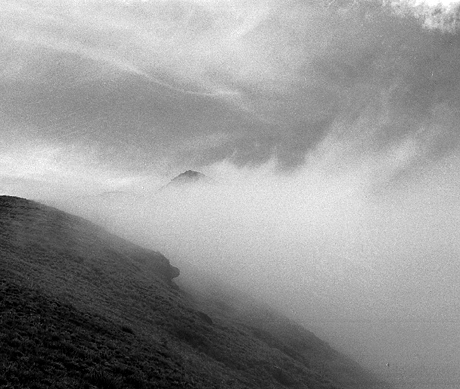
the mighty Chembra among the clouds, Wyanad. this mountain seemed really angry with us when we went to meet him. he let only three among the seven of us to finally trek up the peak. i was one among them. the morning of the second day was like walking in a dream, among caressing clouds, the moon-like-sun making brief appearances, sights of elephants on a distant slope...
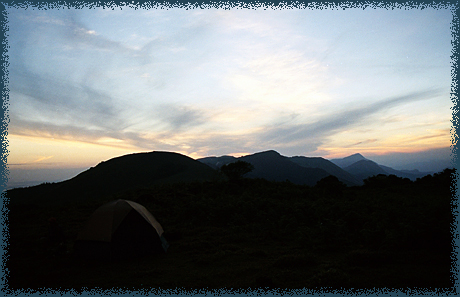
campsite, Tadiyendamol. Kishore, Murali and i trekked up this beautiful mountain in Coorg a few winters back. we are also excited because this was the first time we put to use our newly acquired tent. it stood the winds pretty fine and has joined us for many many treks thereafter...
Tuesday, January 25, 2005
EYES ON A FAST WORLD,
THE WORLD PRESS PHOTO CONTEST 2004,
By ELISABETH BIONDI.
(Aperture magazine, winter 2004)
… the most obvious and dramatic development, of course, is the widespread use of digital photography. This year (with some notable exceptions, such as Luc Delahaye, Alexandra Boulat and Stanley Greene), photojournalists transmitted their images directly from Iraq, making this the first “digital war”. The increased speed makes for a fundamental change in the way photojournalists work-for better, and sometimes for worse.
One advantage of digital technology is obvious: images can be seen, edited, and printed almost instantaneously. News media and audiences now receive instant photojournalism. Also, digital cameras make the technical process easier and can produce technically more “perfect” images, as well as offering great latitude in low-light situations. And the photographer has the freedom to see, store, and dispose of images immediately.
The drawbacks are less obvious. The digital process places new demands on photographers, especially in conflict situations. At the end of each day of shooting, often in life threatening conditions, the photojournalist must transmit pictures-with captions-back to the publication or the agency that awaits them. This is a time consuming and often frustrating task that can add up to six hours to the photographer’s workday. There is little time for careful editing, and perhaps no time at all for old fashioned story weaving. The photographer is deprived of the valuable process of reflection. Every night, instead of thinking ahead and planning the next move, the exhausted photojournalist must begin the tedious job of archiving the day’s images. James Nachtwey puts it bluntly: “The digital cleanup interferes with the journalistic process.” Additionally, there is a curious backward-looking mechanism to digital picture-taking. Instead of focusing on the next image, photographers may be tempted to glance down at the image just taken-and thus may easily miss the ensuing “moment.” Photojournalists have words for this: a “chipmunk” photographer instantly edits while shooting-a process called chimping-allowing little room for composition or thought. How conducive is this to producing lasting images?
Finnish photographer Ilkka Uimonen, who received a prize in the Spot News category, is one of the few who successfully straddles digital and nondigital media. He was on assignment in Iraq for eight weeks and, like everyone who worked for newsmagazines, transmitted his digital images home nightly. But he also carried a rangefinder camera and shot black-and-white film, “on the periphery,” as he says. His are not the only memorable pictures from Iraq, but they are particularly powerful. By allowing himself the freedom to work at his own pace, Uimonen made photographs that are introspective, lyrical, and elusively seductive.
It became evident in Amsterdam that certain events were covered by a great number of photographers; consider the thousands of images of the fall of Saddam’s statue. The process of “embedding” journalists was intended to control (at least to a certain extent) images sent back to the media; and indeed, in the first weeks of the war it did considerably limit photographers’ access. Perhaps, too, the shortage of time to develop and plot out a story contributed to the numbers of photojournalists all covering the same situations.
The new speed and technology, and strictly delimited photographable terrain, have made it particularly difficult during this conflict for a photographer to preserve an independent personal vision. A few have managed to maintain a strong visual “handwriting” in both digital and nondigital images. Some, such as Simon Norfolk, have purposefully chosen the slower, nondigital process of large-format cameras; others use black-and-white film, casting a “slow eye” on a fast-paced world.
As the use of digital photography expands, and as a new generation of photographers falls in love with the ease of this new technology, we can expect yet greater floods of images. No doubt the submissions for the World Press photo 2005 will be even more copious than they were this year. Photography is constantly evolving, and with improving technology, photographers will surely test new creative limits. At the same time, there are and always will be others who choose to let their images stand out from the digital masses by allowing time to work slowly for them. We saw some exceptional photographers by these new “mavericks” at the World Press 2004. They will surely be there next year as well, and I hope the one after, and the one after that.
(Elisabeth Biondi has been the Visuals Editor of the New Yorker magazine since 1996. Previously, she held the position of Director of Photography at Germany’s Stern magazine and at Vanity Fair, was Picture Editor at Geo, USA. Biondi headed the jury of this year’s World Press Photo contest).
(My notes: Alexandra Boulat is one of my favourite photographers and I have been eagerly following her stories. Jan 2005 issue of the National Geographic magazine carries her pictures for a story on Berbers of Morocco).
Monday, January 24, 2005
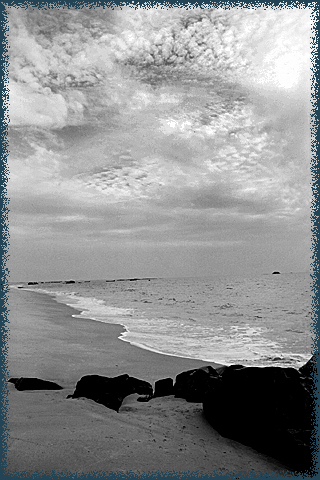
marvanthe beach, karavali coast (thanks Sudarshan for pointing out the error, i had previously named it 'pondicherry')
